ActionAid Liberia and GAFSP Begin Impacts Reviews of the Smallholder Agriculture Development for Food and Nutrition Security (SADFONS) Across 6 Counties in Liberia
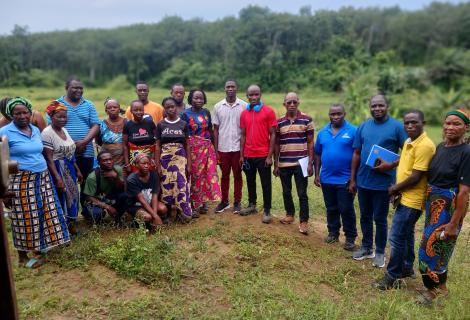
ActionAid Liberia has begun to assess the impacts of the Smallholder Agriculture Development for Food and Nutrition Security (SADFONS) project across six counties in Liberia.
ActionAid International, in partnership with the Global Agriculture and Food Security Program (GAFSP) through a signed memorandum of understanding (MOU) with ActionAid Liberia has begun to assess the impacts of the Smallholder Agriculture Development for Food and Nutrition Security (SADFONS) project across six counties in Liberia.
In collaboration with civil society consortium, the assessment is being carried out in six countries, including Liberia one of the 36 developing nations benefiting from the GAFSP funding.
The Global Agriculture and Food Security Program (GAFSP) established by the G20 leaders in 2009, officially rollout in April 2010 benefiting over 36 countries with a financial portfolio of $ 2.44 billion United States Dollars supporting 320 private and public sector projects in low-income countries.
Over the next few weeks, ActionAid Liberia's team is conducting on field impact reviews across Grand Bassa, Rural Montserrado, Grand Gedeh, River Gee, Bomi, and Maryland Counties. These reviews focus on gathering lessons learned, documenting successes, as well as challenges and exploring opportunities to scale up sustainable agriculture investments that address climate change and empower, and youth in vulnerable farming communities.
Building Climate Resilience Through Sustainable Agriculture
The impact reviews seek to understand how the GAFSP- supported projects are promoting climate adaption, agroecology, improved nutrition and women’s empowerment, all essential to safeguarding Liberia’s food security amid growing climate challenges that have got no borders.
As part of the first leg of the impact review, the ActionAid Liberia team has visited beneficiaries' groups and institutions including the 21st century Rice and Vegetable Farmers Corporative, Sustainable Agriculture Integrated Incorporated, The Jackson Farmer Sustainable Agriculture Corporative(JFSACS) Society, the Urban Communities Farmers Multipurpose Corporative Society, and the University of Liberia’s Agriculture College.
Stories of Change:
The University of Liberia’s College of Agriculture: Empowering Future farmers
At the University of Liberia’s college of Agriculture, the college staff shared how support from the Ministry of Agriculture under the SADFONS Project transformed their teaching farm.
In 2024, the college for the first received two tractors, four power tillers, two water pumps, two cannel diggers, two harrows, and two boreholes’ machines. Which they said has been a leaping step from the single old tractor they previously relied on that often time broke down in the middle of students’ demonstration work hours, leaving agriculture students sometimes frustrated.
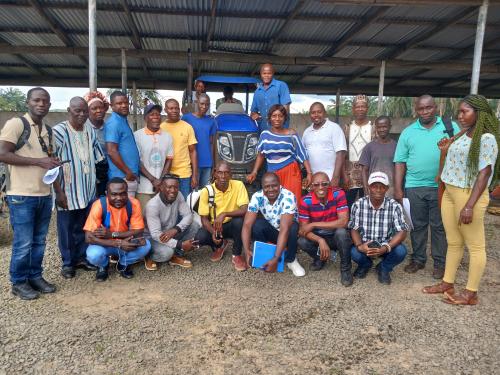
Cucumber harvests increased from five bags per season to ten bags every three days according to Daniel Momolu, the Farm Manager. He further added that their rice yields rose from five bags to 25 bags per harvest. Students are also expanding into cocoa, coffee, gaining hands-on experience in diverse, climate-resilient crops.
“With the coming in of the SADFONS project and these pieces of equipment, we’ve been able to prepare land, we increase our land sized from one acre to now four-plus hectares which we are still adding more to our land size.” Leroy Cagbe said.
He concluded by saying, the availability of the materials donated to the colleges, students no longer have to work several hours using their hands, hoes, and cutlasses and right now they are using the equipment to clear their lands for practical.
Sustainable Agriculture Integrated Incorporate: Transforming abandoned swamp land to boost food security.
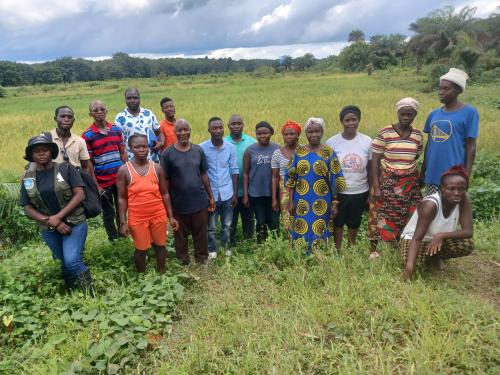
With the initial support from SADFONS, tools, seed (Narica L-19, and Suakoko 8), and some members of the group received awareness about climate changed, and nutrition, but specifically told about the benefits of having diversified diets. The group cultivated 6 hectares of low land rice and harvested 200 bags last year. Within a couple of weeks, the group will begin harvesting for this year’s farming season.
Luogon Polay, the lead farmer at sustainable Agriculture Integrated incorporated said SADFONS support give them boost to start.
“We started this swamp as a virgin swamp, which is 16.4 hectares. When SADFONS came they met out laying out the swamp they created interest and asked if they could help us.” Luogon explained.
He continued by saying “They came and give us initial tools, a few cutlasses, shovel, water cane, and they have given us some seeds, Narica L-19S, and Suakoko 8.”
Beyond just the seed rice which became their turning point. of SAII of turning the 10 hectares of land that was laying uncultivated, the Sustainable development Agriculture integrated incorporated also received some awareness about climate change to better prepare them understand revealing climate change situations and ways they can adapt in order to grapple with the devastating consequences of climate change.
Two- thirds of SAII’s 45 members are women who now play a leading role in climate-smart farming.
However, challenges persist. This ranges from the lack of irrigation, storage, and market access limit their growth. On top of this, the influx of birds now means farmers have to spent their morning hours till evening driving the birds away.
The group is looking out for a better alternative to this hectic process and as well as seeking solutions for irrigation for their vegetable farming during the dry season.
The farmers corporative group has set new goals for the years ahead. They want to cultivate all the 16.4 hectares low land with all rice, out of which they said, SADFONS supported them in cultivating the 6 hectares. From the 6 hectare of low land rice they cultivated, the farmers group harvested 28 bags of 50kg rice.
Farmer Lougon Polay told said “Supporting farmers, is not by talking on radio, let the money go to what the donors put it there for.”
Jackson Temeh Farh: From Hands to Mechanized Tilling
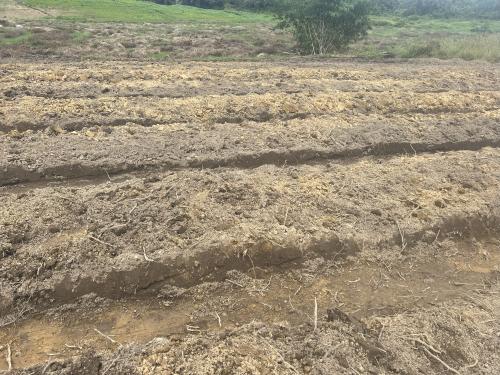
“We used to cultivate 2.5 hectares by hand. Now with the power tiller and water pump machine from SADFONS, we’re doing over nine hectares.” Said the chairperson, Jackson Temeh.
The power tailer now eases soil preparedness for Jackson and his team, and boosts productivity, but Jackson notes that limited equipment, and irrigation still pose challenges, especially during the dry seasons. Despite these hurdles, the frame’s income and yields have significantly improved Jackson said.
The power tailer Jackson reported, has been helpful because tilling of the soil, helps them to makes their work easier. However, he registered that there are also lots of challenges because we have a very huge land that the power tailer cannot tailer within a shorter time, and this field requires a tractor and other equipment like irrigation system.”
“At least the production has changed financially, we have improved our financial status than before.”
From just cultivating 6.3 hectares of lowland rice, Jackson confirmed that they now yield 7.4 metric ton of rice, more than 10 times their initial harvests, but the group's biggest night mare is the lack of storage facility, and market links.
In addition to the power tailer, and the water pump machine, Jackson confirmed that the group received some few hand-full of cucumber, pepper, cabbage, black beauty, and bitter-boye seedings under the SADFON project.
21ST Century Rice and Vegetable Farmers Cooperative: Ambition for rice cultivation Expansion.
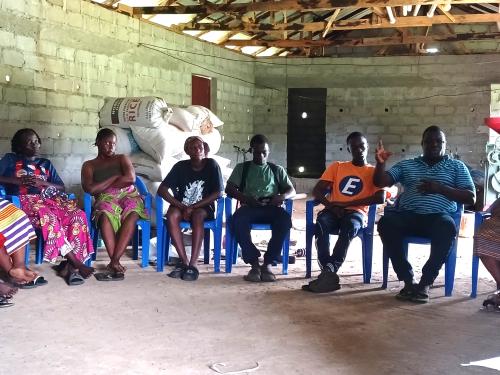
However, they loss part of their 100 bags of rice harvested due to the lack of storage facilities and the lack of market linkage that would have enable them to sell their rice, although the rice farming was not a SADFONS project, but they say funds from their vegetable farming which SADFONS support, contributed largely to the rice cultivation.
“We want to cultivate 50 hectares of lowland rice.” Said lead farmer George Paye. We’re asking donors to help us with tractors, and equipment so we can produce more food and support school feeding in our area.”
Common challenges and farmer’s recommendations
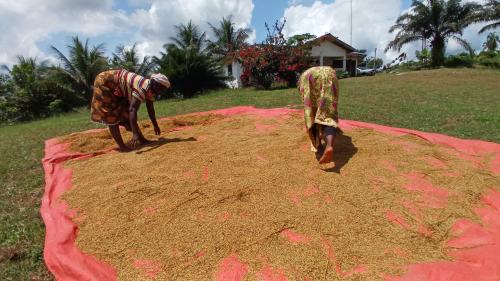
Despite these constraints, farmers remain optimistic and committed to expanding production, with an overall to contribute to Liberia’s food and nutrition security and demonstrating the power of tarted climate-smart investment.
They also want the Ministry of Agriculture and entities receiving donors’ money that are purposely meant to support farmers grow more food and engage into more sustainable farming if Liberia should feed itself and donor funded project for farmers should be closely followed and monitored to ensure the desired results are met.
The SADFONS impacts review will provide insights to GAFSP of how the SADFONS funding to each of the 6 countries where this review process is going were met, and it would inform the GAFSP on the next steps as to whether or not to scale up successful models and strengthen support for smallholder farms.
This impact review is simultaneously taking place across Tanzania, Burundi, DRC, Liberia, Asia (Cambodia, Laos), and Latin America, the Caribbean, in Haiti). The results from the review, the CSO consortium will provide guidance to the GAFSP Steering Committee, as well as convene webinars and eternal events to explore the thematic findings.
This will be in addition to providing insights for the GAFSP itself. It will also inform public briefing papers on how innovative grant-based financing can best support sustainable agricultural initiative and, more broadly offer lessons for financing the Just Transition.